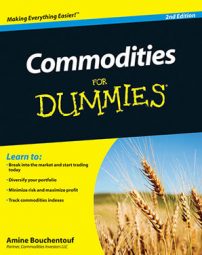If you’re scratching your head trying to figure out the structure of master-limited partnership (MLP) commodity investment firms, don’t worry. Because of regulatory, legal, and corporate reasons, the structures of many MLPs can get pretty convoluted!
Here’s an example. Kinder Morgan is one of the largest energy transportation and distribution companies in the United States. The Kinder Morgan family of companies consists of three separate entities, including its successful master-limited partnership (MLP), Kinder Morgan Energy Partners, LP (NYSE: KMP).
Kinder Morgan’s MLP is managed by a general partner called Kinder Morgan Management, LLC (NYSE: KMR), which was established to manage the MLP. The Kinder Morgan general partner (GP) is, in turn, owned by an even larger entity: Kinder Morgan, Inc. (NYSE: KMI). So the Kinder Morgan MLP (KMP) is run by the Kinder Morgan general partner (KMR), which is owned by Kinder Morgan, Inc. (KMI).
Besides managing the MLP, the GP generally has a financial stake in the MLP itself (usually 2 percent) and is eligible to receive incentive distribution rights (IDRs) based on performance. IDRs are a percentage of the total payout the GP gets to keep after hitting specific targets.
Because the raison d’être of the MLP is to distribute cash back to its unit holders, most MLPs include incentives for the GP if and when it distributes certain levels of cash back to the LPs.
The distribution rights that an MLP grants the general partners are disclosed in the MLP’s partnership agreement with the GP. Before investing in an MLP, comb through the partnership agreement carefully to understand the incentive rights granted to the GP. This is important because IDRs have a direct impact on how much money you get to keep at the end of the day.
The most important piece of information to look for in the partnership agreement is the MLP’s IDR structure.
To understand the MLP structure, you need to fully appreciate the degree of autonomy that the GP has in running the MLP. Keep a few points in mind:
Limited partners have limited voting rights.
LPs have no say in day-to-day operations, which the general partner carries out.
The GP often has no fiduciary duty to the LPs.
An MLP isn’t required to hold annual meetings for unit holders.
Essentially, when you invest in an MLP, you turn over the keys of the kingdom to the GP. The GP exercises a high degree of control over how the MLP is run, how much cash is distributed back to the unit holders, and the general governance matters relating to the MLP. It’s a good idea to thoroughly investigate the general partner’s track record and historical performance.
At the end of the day, you can’t do much if you disagree with what the GP is doing, except sell your units. In this way, an MLP is different than a corporation, where, as a shareholder, you can attend annual meetings, issue proxy statements, and generally exercise a larger degree of control.
That said, most GPs do a good job of running MLPs because it’s in their best financial interest to do so.

